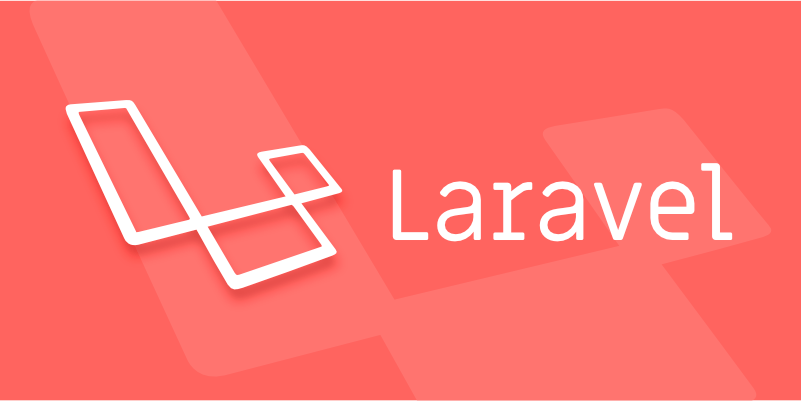What is the difference between web.php and api.php in Laravel routes?
Jul 18, 2025 am 03:41 AMIn Laravel, web.php is used to handle traditional webpage routing that requires sessions and return views, while api.php is used to handle stateless API requests. 1. web.php is aimed at browser interaction, returning HTML pages, dependent on sessions, CSRF protection and cookies; api.php is aimed at API requests, using token authentication, and not dependent on sessions. 2. web.php applies web middleware group, including session management, CSRF protection, etc.; api.php applies api middleware group, including current limiting, JSON parsing, etc. 3. If the routes in web.php involve session or closure reference session data, they cannot be cached; api.php routes are easier to cache because they are stateless. 4. api.php has the /api prefix by default, which facilitates logical separation of front and back-end routing; web.php has no default prefix.

In Laravel, the difference between web.php and api.php lies mainly in the type of routes they are intended for and the middleware applied to them by default.

1. Purpose: Web vs API Routes
web.php is meant for routes that serve HTML pages — basically, anything that involves user interaction through a browser. These routes usually return views and maintain session state, CSRF protection, and cookies.
api.php , on the other hand, is for stateless API routes — typically used for mobile apps, single-page applications (SPAs), or third-party services. These routes don't rely on sessions or cookies; instead, they often use tokens (like API keys or OAuth) for authentication.

2. Middleware Differences
Middleware is where the real distinction shows up.
-
web.phproutes automatically use the web middleware group , which includes:- Session management
- CSRF protection
- Cookie encryption
- View sharing
This is all useful when building traditional web applications.

-
api.phproutes use the api middleware group , which includes:- Rate limiting (via
throttle) - Request parsing for JSON
- Stateless authentication (if configured)
- Rate limiting (via
These are helpful for handling HTTP requests that don't rely on sessions or cookies.
3. Route Caching Behavior
Another subtle but important difference has to do with route caching.
- Routes defined in
web.phpcannot be cached usingphp artisan route:cacheif they rely on session-related features or closings that reference session data. -
api.phproutes are generally easier to cache because they're usually stateless and use controller classes rather than closings.
So if you're building a large API and want to improve performance, defining routes in api.php can be more efficient.
4. URL Prefix and Organization
By default, Laravel prefixes API routes with /api — this is set in the RouteServiceProvider. So a route defined as /users in api.php becomes accessible at /api/users .
Web routes don't have a default prefix, so they map directly to your URL structure. This helps separate your frontend and backend routes logically.
Basically, the choice between web.php and api.php comes down to what kind of response you're returning and how the route will be used. Keep your frontend-facing, session-based routes in web.php , and your JSON-driven, stateless API endpoints in api.php .
The above is the detailed content of What is the difference between web.php and api.php in Laravel routes?. For more information, please follow other related articles on the PHP Chinese website!

Hot AI Tools

Undress AI Tool
Undress images for free

Undresser.AI Undress
AI-powered app for creating realistic nude photos

AI Clothes Remover
Online AI tool for removing clothes from photos.

Clothoff.io
AI clothes remover

Video Face Swap
Swap faces in any video effortlessly with our completely free AI face swap tool!

Hot Article

Hot Tools

Notepad++7.3.1
Easy-to-use and free code editor

SublimeText3 Chinese version
Chinese version, very easy to use

Zend Studio 13.0.1
Powerful PHP integrated development environment

Dreamweaver CS6
Visual web development tools

SublimeText3 Mac version
God-level code editing software (SublimeText3)
 Working with pivot tables in Laravel Many-to-Many relationships
Jul 07, 2025 am 01:06 AM
Working with pivot tables in Laravel Many-to-Many relationships
Jul 07, 2025 am 01:06 AM
ToworkeffectivelywithpivottablesinLaravel,firstaccesspivotdatausingwithPivot()orwithTimestamps(),thenupdateentrieswithupdateExistingPivot(),managerelationshipsviadetach()andsync(),andusecustompivotmodelswhenneeded.1.UsewithPivot()toincludespecificcol
 Sending different types of notifications with Laravel
Jul 06, 2025 am 12:52 AM
Sending different types of notifications with Laravel
Jul 06, 2025 am 12:52 AM
Laravelprovidesacleanandflexiblewaytosendnotificationsviamultiplechannelslikeemail,SMS,in-appalerts,andpushnotifications.Youdefinenotificationchannelsinthevia()methodofanotificationclass,andimplementspecificmethodsliketoMail(),toDatabase(),ortoVonage
 Understanding Dependency Injection in Laravel?
Jul 05, 2025 am 02:01 AM
Understanding Dependency Injection in Laravel?
Jul 05, 2025 am 02:01 AM
Dependency injection automatically handles class dependencies through service containers in Laravel without manual new objects. Its core is constructor injection and method injection, such as automatically passing in the Request instance in the controller. Laravel parses dependencies through type prompts and recursively creates the required objects. The binding interface and implementation can be used by the service provider to use the bind method, or singleton to bind a singleton. When using it, you need to ensure type prompts, avoid constructor complications, use context bindings with caution, and understand automatic parsing rules. Mastering these can improve code flexibility and maintenance.
 Strategies for optimizing Laravel application performance
Jul 09, 2025 am 03:00 AM
Strategies for optimizing Laravel application performance
Jul 09, 2025 am 03:00 AM
Laravel performance optimization can improve application efficiency through four core directions. 1. Use the cache mechanism to reduce duplicate queries, store infrequently changing data through Cache::remember() and other methods to reduce database access frequency; 2. Optimize database from the model to query statements, avoid N 1 queries, specifying field queries, adding indexes, paging processing and reading and writing separation, and reduce bottlenecks; 3. Use time-consuming operations such as email sending and file exporting to queue asynchronous processing, use Supervisor to manage workers and set up retry mechanisms; 4. Use middleware and service providers reasonably to avoid complex logic and unnecessary initialization code, and delay loading of services to improve startup efficiency.
 Managing database state for testing in Laravel
Jul 13, 2025 am 03:08 AM
Managing database state for testing in Laravel
Jul 13, 2025 am 03:08 AM
Methods to manage database state in Laravel tests include using RefreshDatabase, selective seeding of data, careful use of transactions, and manual cleaning if necessary. 1. Use RefreshDatabasetrait to automatically migrate the database structure to ensure that each test is based on a clean database; 2. Use specific seeds to fill the necessary data and generate dynamic data in combination with the model factory; 3. Use DatabaseTransactionstrait to roll back the test changes, but pay attention to its limitations; 4. Manually truncate the table or reseed the database when it cannot be automatically cleaned. These methods are flexibly selected according to the type of test and environment to ensure the reliability and efficiency of the test.
 Choosing between Laravel Sanctum and Passport for API authentication
Jul 14, 2025 am 02:35 AM
Choosing between Laravel Sanctum and Passport for API authentication
Jul 14, 2025 am 02:35 AM
LaravelSanctum is suitable for simple, lightweight API certifications such as SPA or mobile applications, while Passport is suitable for scenarios where full OAuth2 functionality is required. 1. Sanctum provides token-based authentication, suitable for first-party clients; 2. Passport supports complex processes such as authorization codes and client credentials, suitable for third-party developers to access; 3. Sanctum installation and configuration are simpler and maintenance costs are low; 4. Passport functions are comprehensive but configuration is complex, suitable for platforms that require fine permission control. When selecting, you should determine whether the OAuth2 feature is required based on the project requirements.
 Implementing Database Transactions in Laravel?
Jul 08, 2025 am 01:02 AM
Implementing Database Transactions in Laravel?
Jul 08, 2025 am 01:02 AM
Laravel simplifies database transaction processing with built-in support. 1. Use the DB::transaction() method to automatically commit or rollback operations to ensure data integrity; 2. Support nested transactions and implement them through savepoints, but it is usually recommended to use a single transaction wrapper to avoid complexity; 3. Provide manual control methods such as beginTransaction(), commit() and rollBack(), suitable for scenarios that require more flexible processing; 4. Best practices include keeping transactions short, only using them when necessary, testing failures, and recording rollback information. Rationally choosing transaction management methods can help improve application reliability and performance.
 Handling HTTP Requests and Responses in Laravel.
Jul 16, 2025 am 03:21 AM
Handling HTTP Requests and Responses in Laravel.
Jul 16, 2025 am 03:21 AM
The core of handling HTTP requests and responses in Laravel is to master the acquisition of request data, response return and file upload. 1. When receiving request data, you can inject the Request instance through type prompts and use input() or magic methods to obtain fields, and combine validate() or form request classes for verification; 2. Return response supports strings, views, JSON, responses with status codes and headers and redirect operations; 3. When processing file uploads, you need to use the file() method and store() to store files. Before uploading, you should verify the file type and size, and the storage path can be saved to the database.






